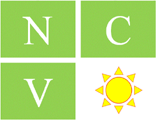Hello June! We are officially in the summer months and halfway through 2019. We’re also in the throes of what I affectionately refer to as “The Bermuda Triangle of Debt” season. From the middle of May until the middle of June, it’s time for graduation ceremonies. Then June is the month for weddings, everyone knows that. Finally, it’s moving season since most people wait to buy or sell houses when the kids are out of school for summer break, right? The common thread with all these milestone events is how expensive they can be.
For More In Depth Information If you want to more personal finance tips and strategies, including 5 Student Loan Debt Payment Tips, enter your information and click on "Learn More!" Check your email for FREE gift details!![]()
Graduating from high school means possibly taking on student loan debt and graduating from college means starting to pay it off. Weddings, well, we know how expensive they can be. The most expensive event of all is probably buying a house, for now anyway. Who knows how much more expensive a college degree will get before that bubble bursts! With a house traditionally being the primary financial (meaning retirement), asset for most households, it makes sense that this would be the most expensive purchase that a number of us will ever make.
So, what do we do when we’re staring down the barrel of the most expensive season of the year? Well, we do what we’ve been told to do, we budget for it and we keep on saving money, right? Yes, of course. However, we’ve talked plenty about budgeting but we haven’t really talked a lot about saving money. You may be scratching your head and asking “aren’t they the same thing?” No, my friend, they are not.
I was watching a show recently about issues Baby Boomers are facing in retirement when one of the contributors made a statement I found interesting. Barbara Rockefeller said “not buying the coffee doesn’t mean you’ve actually saved the money, you haven’t saved it until you’ve put it in the bank.” I paraphrased her wording but, you get the gist. Her statement made me realize that this fundamental idea may not be obvious to everyone. In light of that, I thought it might be a good idea to break it down a little to give my faithful readers a new way to think about it that makes the concept of saving money crystal clear.
The idea of saving money comes in a lot of guises. It can mean shopping the sale rack religiously, couponing or looking for the “buy one get one half off” deals. Another way people typically think of saving money is making the most of what you already have or somehow stretching your dollar. What we really don’t think much about is the all important “bank deposit” part of it. In fact, most of the time we only think about the “how much does that cost” part of it. The truth is, there are three steps to actually saving money, and here they are.
First of course, is not spending it. That’s a no-brainer. You can’t put it anywhere if you no longer have it! Again, we’ve spent a lot of time talking about how to not spend money. Being mindful and sticking to a budget are critical to not spending. So, what’s next? Well, putting it in the bank, of course!
In this day and age, that’s easier than it’s ever been before. More and more people are getting paid by electronic deposit right into their bank account rather than by check or even cash. I once had a job when I was in college where I got paid in cash with the deductions hand-written on the little brown envelope my pay came in. It wasn’t a waitressing job, either! That seems like a million years ago but, that used to be the way it was done.
Money saving tip #1: If you do wait tables and a lot of your earnings are in cash, do yourself a favor and deposit them on your way home from work. A girl I worked with at a restaurant told me that years ago and it became a habit that I still stick to long after I quit waiting tables. If I have excess cash on my, I take it to the bank ASAP. Out of sight, out of mind!
We’ve covered step one, not spending it and step two, putting it in the bank. If you don’t have a bank account, and I’m finding out that lots of people don’t, you might want to hop on the internet and see if you can find an online bank that will work for you. They are gaining ground in popularity for their lower overhead and overall flexibility, just make sure you do your research and get one that has relatively good reviews. For my money, I tend to stick to credit unions. They are the ideal choice for banking, in my opinion. If you want to learn more about why I’m a credit union fan, check out my blog post from January of 2017 by clicking here.
Now we come to the all important step three, investing. If you are just letting your money sit in your checking, savings or even money market account, you’re losing out on compounding. This means your money isn’t earning more than 1%, or at most 2%, in interest. In order to really start making your money work for you, and truly save it, you need to deposit it into an account where you can earn interest on investments.
If you are lucky enough to work somewhere that has a 401(k) program available to its employees enroll in it tomorrow, if you haven’t already. Then you need to max out your contribution until you meet your employer match (if there is one). If you don’t have access to a 401(k), save up a little nest egg and go open up a Roth IRA and max out your annual contribution by purchasing mutual funds. Don’t forget to set them up on a dividend reinvestment plan so that your dividends are, well, reinvested. This is how you make your money work for you. This is how you save money.
When I heard Barbara Rockefeller say not spending money isn’t the same as saving it, it stopped me in my tracks. The realization that this idea needs to be talked about was a profound thought for me. We 99%ers are busy enough putting food on the table and getting our kids to school without having to dig into the theory behind financial concepts. So, let’s make a commitment to talk about what it really means to save money at the very least, with our kids. A little financial literacy can go a very long way, don’t you think?
Sincerely,
The Dollar Lama
P.S. Make sure you check out my online courses, books and resources, too! Investing in your money management education is an investment in yourself. That’s the best investment you’ll ever make, I guarantee it! Don’t forget my weekly Facebook live videos on Facebook.com/newcashview, Instagram @joyalfordbrand and on my YouTube channel NCVTV. You can catch me twice, on Mondays between 3:00 p.m. and 4:00 p.m. for my Monday Money Management Minute and Thursday evenings between 7:00 and 9:00 (Eastern Standard time), for my weekly NCVTV episode. They are packed full of useful and entertaining money management information! If you’ve missed any NCVTV episodes, you can see the latest on newcashview.com or you can check out my YouTube channel and get caught up! You can get there by clicking here. Remember, like and share the NCVTV videos on Facebook and all your social media platforms, so others can benefit from them, too!

GET INSTANT ACCESS
Download your FREE gift!
To learn 5 Student Loan Debt Payment Tips, enter your info and click on download.
Check your email for FREE gift download!

